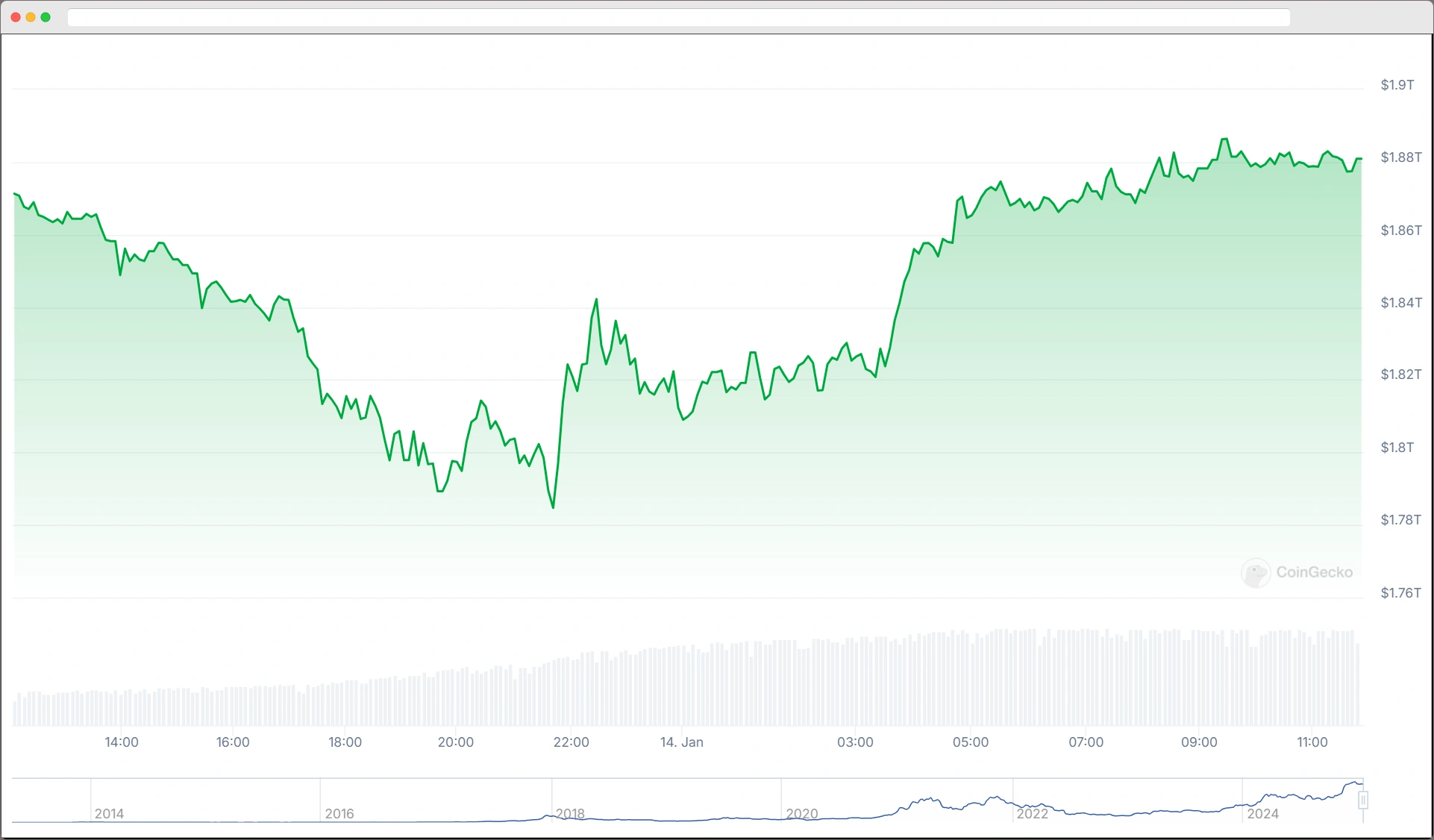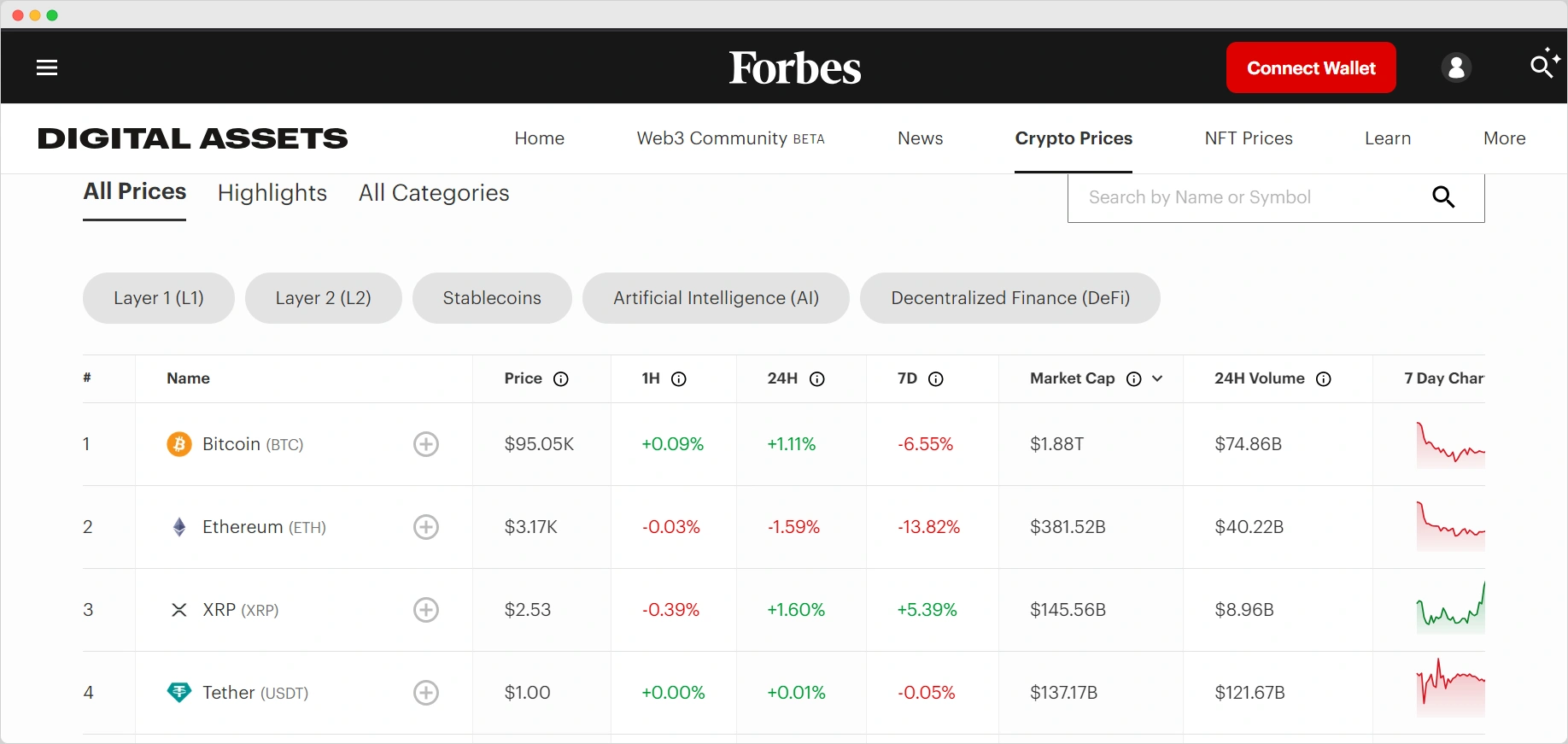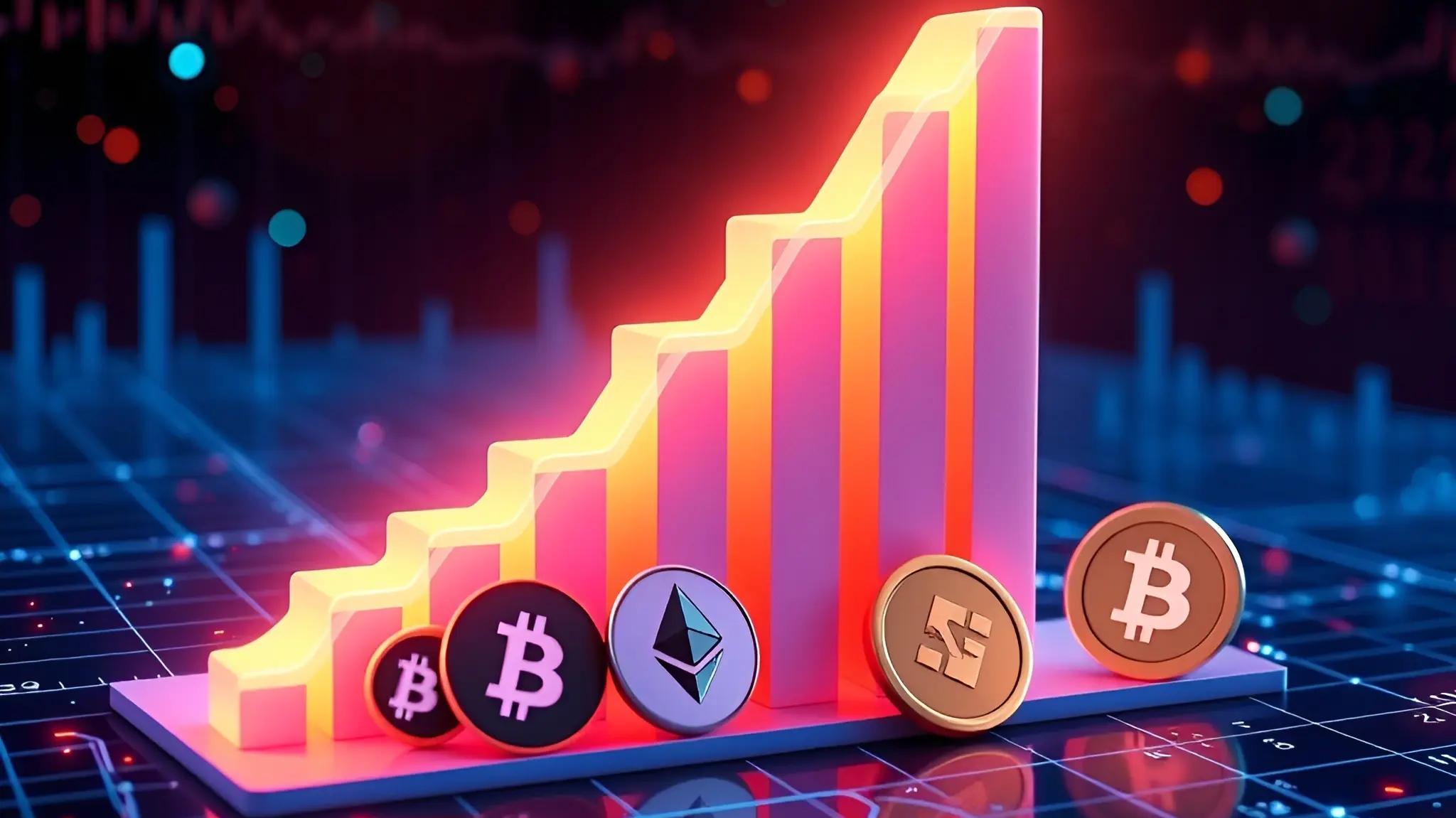What is Market Cap?
Market Capitalization, or more commonly known as Market Cap, is a parameter used to measure the total value of an asset, whether in the stock market or in the world of cryptocurrency.
In general, market capitalization provides an overview of an asset’s growth potential, scale, and stability.
Therefore, understanding what Market Cap is, the process behind its value, and its role for various stakeholders is crucial when making investment decisions.
Key Takeaways:
ShowDefinition of Market Cap

Market Cap is an indicator that reflects the relative size of an asset in the market. In cryptocurrency, this parameter is often used to assess the economic strength of a project.
This figure serves as a reference to classify assets into large-cap, mid-cap, or small-cap, as well as to understand an asset’s position in the market.
For example, a giant coin like Bitcoin is considered dominant because it has the largest market capitalization among other cryptocurrencies. It creates an impression of stability and security.
The Role of Market Cap for Various Stakeholders
Market Cap is a vital tool used by many parties in the market ecosystem for different purposes.
- Investors utilize it as a primary indicator to compare the relative value of various cryptocurrencies, thereby helping them develop more targeted investment strategies based on their needs and risk profiles.
- Market analysts consider market capitalization a key parameter for evaluating a project’s potential and economic strength. By understanding the scale of its market cap, they can provide a more accurate picture of an asset’s future prospects.
- Financial institutions use market capitalization to gauge an asset’s risk, stability, and viability within a portfolio. Analyses based on market cap help institutions make strategic decisions in managing their investments.
When Does Market Cap Become Relevant?
When considering whether to buy or sell an asset, Market Cap is one of the crucial indicators to take into account.
1. Evaluating the Scale of a Project
Assets with a large Market Cap generally exhibit higher stability, making them more appealing to conservative investors who prioritize capital preservation.
2. Comparing Risk and Potential
Investors can weigh the growth potential and risk levels across assets with different market caps. Small-cap assets often have high growth potential but come with large price fluctuations.
3. Diversification Strategy
Understanding Market Cap helps investors determine a balanced mix of assets, striking the right equilibrium between stability and potential returns.
How to Calculate Market Cap?

Calculating Market Cap is actually a fairly straightforward process. First, you need to know the current price of a single unit of the asset.
Market Cap = Price per Unit × Total Units in Circulation
For example, if one token is priced at $50, the next step is to multiply that price by the total number of tokens in circulation.
Let’s say there are 10 million units in circulation. Multiplying these figures will give the market capitalization of that asset:
Market Cap = 50 × 10,000,000 = 500,000,000 (or $500 million)
In this way, market capitalization provides an effective snapshot of an asset’s overall value.
Tip: Make sure to use accurate and verified data—such as circulating supply—from reliable sources like CoinMarketCap or CoinGecko.
Cryptocurrency Classification by Market Cap

Cryptocurrencies are classified according to their Market Cap so that investors can better understand an asset’s risk and growth potential. Categories like large-cap, mid-cap, and small-cap help investors make decisions aligned with their goals and risk tolerance.
Visualization of different categories:
| Category | Market Value | Example | Characteristics |
|---|---|---|---|
| Large-Cap | > $10 billion | Bitcoin, Ethereum | – More stable – Lower risk – Moderate growth |
| Mid-Cap | $1–$10 billion | Solana, Polygon | – Balance between stability and growth potential |
| Small-Cap | < $1 billion | New/Niche projects | – Volatile – High risk – High growth potential |
Additionally, Market Cap size offers insights into a project’s stability and dominance in the market, making it a vital guide when formulating investment strategies.
1. Large-Cap Category
Large-cap cryptocurrencies have a market value above $10 billion. Examples include Bitcoin (BTC) and Ethereum (ETH), which dominate the market due to their enormous scale.
Assets in this category tend to be more stable compared to others, so the risk is lower. However, their growth is often relatively slow because they have already achieved a considerable level of adoption.
2. Mid-Cap Category
Mid-cap cryptocurrencies have a market value ranging from $1 to $10 billion. Examples include Solana (SOL) and Polygon (MATIC), which demonstrate high growth potential along with moderate risk.
These cryptocurrencies often attract investors seeking a balance between stability and substantial returns. Mid-cap projects are typically in an active development phase, which appeals to investors optimistic about market growth.
3. Small-Cap Category
Small-cap cryptocurrencies have a market value below $1 billion. They commonly come from new or niche projects with significant growth potential, but also higher risk due to their volatility.
Investors interested in small-cap assets generally aim for large returns, although they must be prepared to face substantial price fluctuations in the market.
Risks and Limitations of Market Cap
While market capitalization offers a general overview of an asset’s value and stability, there are several limitations to bear in mind. Below is a summary and explanation of the risks and limitations when using Market Cap as a valuation indicator for crypto assets:
1. Inaccurate Supply Data
- ‘Locked’ coins: Coins that are stored, lost, or locked (e.g., in a smart contract) may not be reflected in the circulating supply.
- Impact: The Market Cap could appear larger or smaller than it actually is.
2. Data Manipulation
- Fake trading volume (wash trading): Some crypto exchanges inflate their trading volume artificially.
- Impact: The price used for calculating Market Cap might not represent actual market conditions.
3. Does Not Reflect Project Fundamentals
- Purely quantitative: Market Cap does not show the quality of the technology, development team, or real-world adoption of a project.
- Impact: A high Market Cap does not necessarily mean a project has strong fundamentals.
4. Reliance on Current Price
- High volatility: Crypto prices can change drastically within hours or even minutes.
- Impact: Market Cap tends to fluctuate and can be misleading in assessing short-term stability.
5. Does Not Indicate Liquidity
- Low liquidity: An asset with a large Market Cap but low trading volume may be hard to buy or sell without affecting the price.
- Impact: A high Market Cap does not guarantee ease or speed of transactions.
6. Does Not Consider Token Distribution
- Concentrated ownership: If the majority of tokens are held by a small group, the price can be manipulated.
- Impact: A high Market Cap can still be fragile if the token distribution is not widespread.
7. Overlooks User Activity and Adoption
- On-chain activity: The real level of usage and adoption is rarely reflected in Market Cap alone.
- Impact: Market Cap does not indicate whether a project is genuinely useful or just ‘hype.’
8. Vulnerable to Supply Inflation
- Issuance of new coins: Some projects regularly mint additional coins or tokens.
- Impact: Market Cap can rise due to an increased supply rather than true fundamental growth.
What Is Market Cap and Why Is It Important?
Market Cap is a parameter that helps investors gauge the size and stability of an asset. By knowing its market capitalization, investors can:
- Understand the risk associated with the invested asset.
- Compare growth potential across large-cap, mid-cap, and small-cap assets.
- Develop more precise portfolio diversification strategies.
However, it is important to remember that Market Cap is just one of many indicators used for analysis. Numerous other factors—such as a project’s fundamentals, market trends, and an individual’s risk profile—also need to be considered.
Frequently Asked Questions (FAQs)
How Do You Calculate Market Cap?
If the price per unit of a cryptocurrency is $50 and the total number of units in circulation is 10 million, expressed formally it becomes:
Market Cap = Price per Unit × Total Units in Circulation
What Was Bitcoin’s Initial Market Cap?
In its early days from 2009 to 2010, Bitcoin’s price was close to zero. In October 2009, Bitcoin was recorded at around $0.00076 per BTC, with only a very small number of coins in circulation.
When Did Bitcoin Reach a US$1 Billion Market Cap?
Bitcoin surpassed the US$1 billion mark in March 2013. During this period, 1 BTC was priced in the tens of dollars, before experiencing a significant rise in mid-to-late 2013.
How Large Is the Total Market Cap of All Crypto Assets?
At its peak in November 2021, the total market cap of all crypto assets reached around $3 trillion, reflecting a surge in popularity and investor interest. However, following the onset of a bear market, the market cap declined and fluctuated between $800 billion and $1.3 trillion throughout 2022 and 2023. By early to mid-2023, the average market cap hovered around $1 trillion, indicating moderate market stabilization. For comparison, on December 31, Bitcoin (BTC)—one of the largest crypto assets—had a market capitalization of $1.9 trillion, based on 19.8 million coins in circulation at a price of $93,429.20 per coin.

